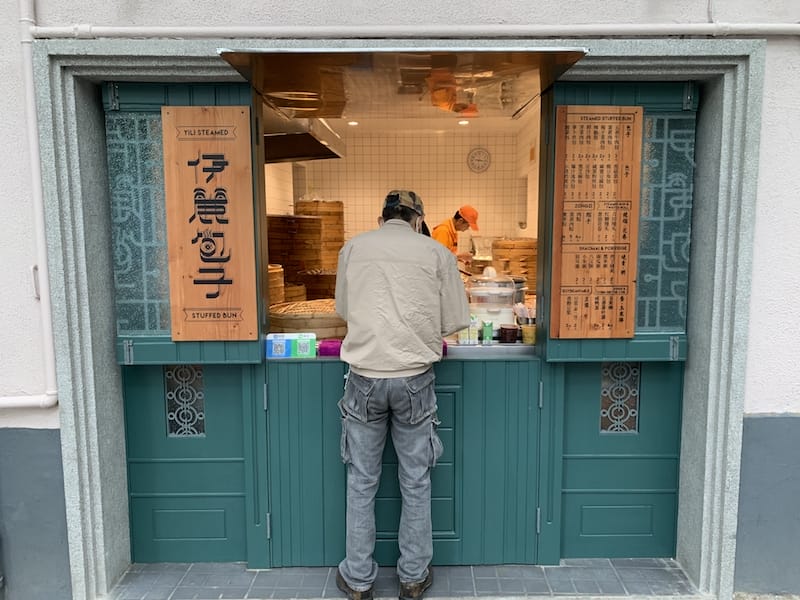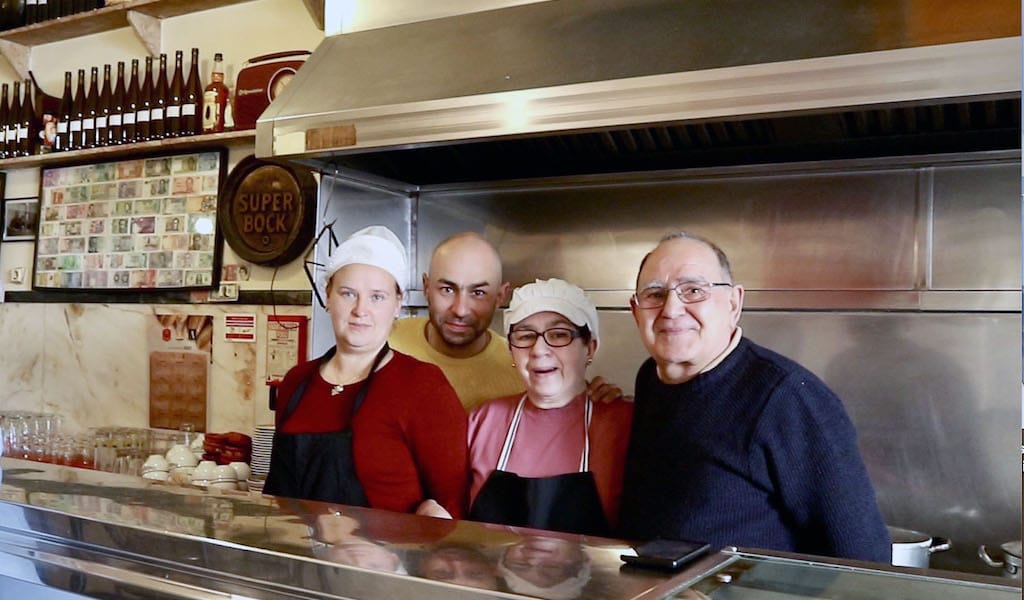It’s 9 p.m. at Fu Chun Xiao Long, and the waitress taps me on the shoulder to let me know they’re about to close. The Shanghainese snack shop has been serving up xiaolongbao (soup dumplings) and paigu niangao (deep-fried pork cutlets and rice cakes in gravy) until midnight for decades. But in the post-Covid-19 world, they shut their doors earlier, knowing that late-night business won’t be at the same level as it was last year, or even the last 10 years.
Early closures aren’t the only changes to Shanghai’s dining scene. Most local restaurants have signs up requiring masks for entrance, despite the fact that the local government deemed them unnecessary several weeks ago. (We take them off to eat, of course.) Diners can also expect to have their temperature taken at the door, and some restaurants ask for phone numbers and passport details so they can assist the authorities with contact tracing.
 Luckily, Shanghai was spared the brunt of the pandemic. The shutdown was never an official lockdown in China’s financial capital, although very few restaurants were given official permission to offer in-person dining during the month of February and part of March. The population of former and current Covid-19 patients is still under 700 in the city, and Shanghai hasn’t had a case of local transmission since late March. Residents’ green QR codes – part of a color-based “health code” system, with red requiring quarantine and green allowing free movement – now seem less significant, and diners are allowed to sit across from their dining partner instead of side-by-side with a chair in between them. No one seems to worry about anyone spreading the disease locally; there is freedom of movement within most of China. And any fear of imported cases is assuaged by the practice of testing every individual at the border (only Chinese nationals are being allowed into the country at the moment) and requiring them to undergo a strict 14-day centralized quarantine before being able to mingle with the general public.
Luckily, Shanghai was spared the brunt of the pandemic. The shutdown was never an official lockdown in China’s financial capital, although very few restaurants were given official permission to offer in-person dining during the month of February and part of March. The population of former and current Covid-19 patients is still under 700 in the city, and Shanghai hasn’t had a case of local transmission since late March. Residents’ green QR codes – part of a color-based “health code” system, with red requiring quarantine and green allowing free movement – now seem less significant, and diners are allowed to sit across from their dining partner instead of side-by-side with a chair in between them. No one seems to worry about anyone spreading the disease locally; there is freedom of movement within most of China. And any fear of imported cases is assuaged by the practice of testing every individual at the border (only Chinese nationals are being allowed into the country at the moment) and requiring them to undergo a strict 14-day centralized quarantine before being able to mingle with the general public.
But the lasting effect on the economy, and the culinary community, is noticeable. Some big-name international restaurants have made waves by closing up shop, one of the more notable examples being Hakkasan, an upscale Cantonese restaurant with an expensive address on the city’s famous Bund. The owners pinned the closure on the global economy and noted that “this decision will enable us to reduce our portfolio and focus on the remaining venues,” including the original Hakkasan in London, as well as other branches in Singapore, New York and the UAE. Morton’s also served up its last filet mignon sliders and blue cheese olive martinis that made its happy hour one of the city’s most popular.
While some restaurants went bankrupt, others made it through the “special period” by relying heavily on delivery and takeout when the district governments ordered most in-restaurant dining to stop. Even spots like Din Tai Fung and fine dining Western restaurants like Heritage by Madison, which normally eschew Meituan and Ele.me, popular delivery apps, turned to the platforms in their time of crisis and are still offering delivery.
“Hopefully word will spread that we’re back again, and we’ll start attracting more regulars, but it’s almost impossible to predict anything.”
Some places around town appeared to close completely, only to open in April with a revamped shop. I spoke to the owner of Yili Baozi, a former hole-in-the-wall baozi (steamed bun) shop that got a facelift before reopening on April 15, about why she chose to renovate during the pandemic. Chen explained that the overhaul was originally set for autumn, but after the Chinese New Year holiday was extended a week and the coronavirus crisis was drawing out, they decide to proceed ahead of schedule. Local authorities also informed them that their shop would likely not be able to reopen without upgrading to meet stringent health regulations that are being enforced with new vigor.
Business at Yili hasn’t returned to pre-Covid-19 levels yet, but locals are excited that their neighborhood breakfast shop is back in business. Asked if she thought business would bounce back, Chen responded, “We don’t really have a social media presence, so when people came by while the restaurant was under construction, I think they just assumed we were gone for good. Hopefully word will spread that we’re back again, and we’ll start attracting more regulars, but it’s almost impossible to predict anything.”

No restaurateur or chef I spoke to has seen their business return to 2019 levels. On a recent trip to the normally overflowing Cha’s, we queued for less than a minute for a table of six, a wait that would normally stretch half an hour at a minimum. But the slowdown hasn’t stopped new restaurants, bars and clubs from opening.
Lucky Mart opened in the former French Concession on April 10, less than six weeks after Camden Hauge, one of Shanghai’s most prolific restaurateurs, signed the lease. She had a lot of time to think about what to do next as all of her restaurants were forced to close by the local district governments in February and part of March, so she created a cheap and cheerful highball and kobini (Japanese convenience store) concept. While locals and expats are not out fully revenge spending like everyone had hoped, they are definitely revenge drinking, and affordable, excellent highballs fit the bill for this new demand.
As the weather gets nicer, and more people head outside to brunch, patios and picnics, business continues to improve. But the population of Shanghai is noticeably smaller. Outside of diplomats and flight crew, no foreign nationals – even those with a valid visa or residence permit – have been allowed into China since March 28, international flight routes are limited to once per week, and everyone who enters is quarantined for 14 days. The mood outside of quarantine, however, is jubilant, albeit tinged with a bit of survivor’s guilt, and a desire to support favorite local restaurants and bars is driving everyone’s dining choices these days.
 September 1, 2020 Porto Reopening
September 1, 2020 Porto Reopening
On June 1, when Portugal entered the third phase of its lockdown exit, normalcy was […] Posted in Porto April 2, 2024 Grandma’s Folar Recipe
April 2, 2024 Grandma’s Folar Recipe
Folar is the generic name given to traditional Easter sweet bread in Portugal. Making it […] Posted in Lisbon April 23, 2021 A Tasca Renewed
April 23, 2021 A Tasca Renewed
Last Monday was an emotional day for João Gomes, his wife, Adelaide, his son Nuno and […] Posted in Lisbon
Published on May 07, 2020
Related stories
September 1, 2020
PortoOn June 1, when Portugal entered the third phase of its lockdown exit, normalcy was still an elusive feeling. It was a mild Monday in Porto, the country’s second largest city, and the bars and restaurants that were open had few patrons. But as summer unfolded and cases remained low in northern Portugal, the city…
April 2, 2024
LisbonFolar is the generic name given to traditional Easter sweet bread in Portugal. Making it from scratch is somewhat of a long process, but being confined due to the coronavirus crisis, we seem to have a bit more time on our hands than expected. My family’s folar recipe is from my grandmother Felismina, who was…
April 23, 2021
LisbonLast Monday was an emotional day for João Gomes, his wife, Adelaide, his son Nuno and Nuno’s wife, Ludmila. Imperial de Campo de Ourique, the family’s tasca, reopened for business after being shut for almost three months due to anti-Covid measures in Portugal. Hungry Lisboetas can once again enjoy the traditional and hearty dishes cooked…


















































































